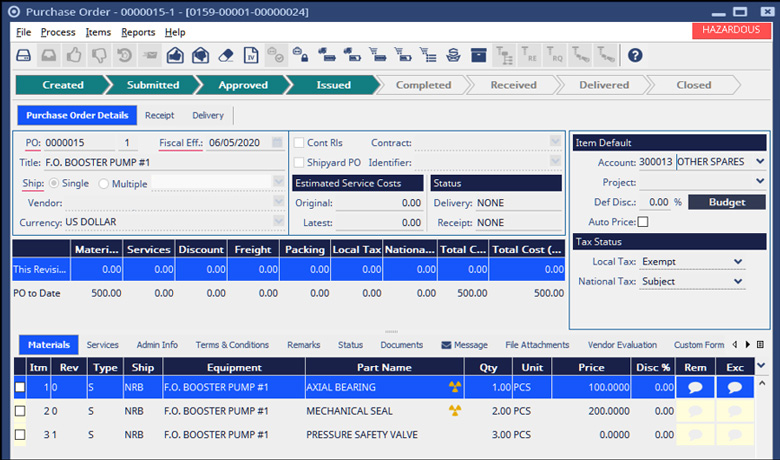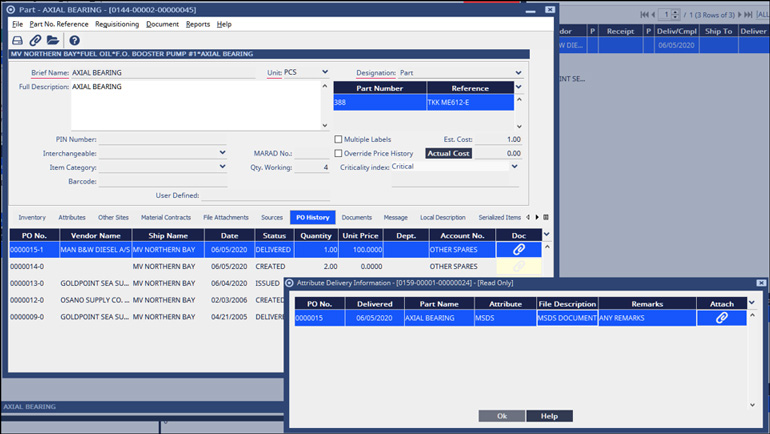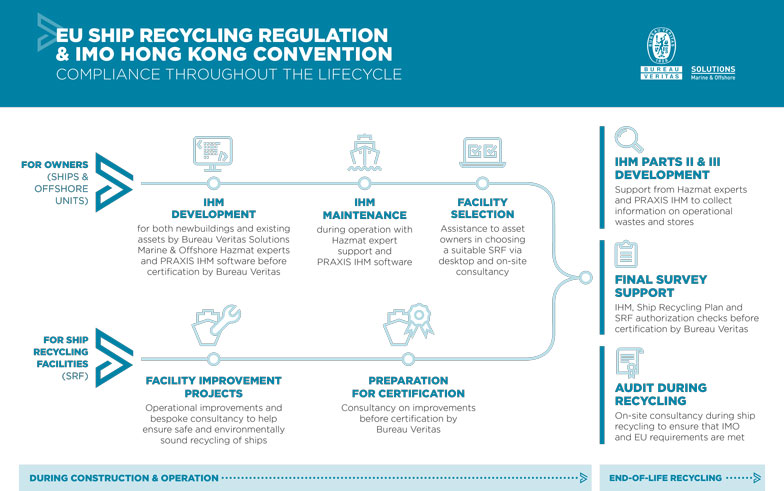An IHM certificate is valid for five years at a time, given that the IHM is being continuously updated and maintained. An IHM provides an inventory of hazardous materials contained in a ship’s structure or fittings, together with details of their location and quantities.
IHM Life Cycle Solution
Through  IHM Life Cycle Solution we provide a turnkey IHM (Inventory of Hazardous Materials) / Green Passport solution for shipowners that has been approved by DNV GL, ABS, Lloyd’s Register, BV, Class NK, RINA and Korean Register.
IHM Life Cycle Solution we provide a turnkey IHM (Inventory of Hazardous Materials) / Green Passport solution for shipowners that has been approved by DNV GL, ABS, Lloyd’s Register, BV, Class NK, RINA and Korean Register.
IHM Maintenance & IHM Inspection / Survey
We offer IHM maintenance as a stand-alone service when an IHM inspection is not required or has already been performed.
An IHM inspection / survey will be conducted on vessels without an IHM. An IHM Report describing the inspection and providing lab results from the onboard sampling of more than 20 materials including asbestos will be compiled after the inspection and approved by the vessel’s class society.
We then perform IHM maintenance through the vessel’s life cycle with state-of-the-art software. An introduction to IHM maintenance, the Hong Kong Convention and the EU Ship Recycling Regulation can be downloaded here.
HazMat Experts stationed around the world
IHM Inspections are performed by our certified HazMat Experts with global reach, operating out of Norway, Holland, UK, Greece, France, Spain, Turkey, Singapore, Shanghai, South Korea, USA, Canada, Brazil and Australia.
Get IHM Compliance now
Request a call-back to discuss your needs or to receive a free price quote. Optionally, send us a prefilled free price quote request by e-mail, or fill out this form.
Customers include Frontline, DOF, Torvald Klaveness, Siem Offshore, Buksér & Berging, Eidesvik, OSM, Viking Line and many more around the globe.
Metizoft handles all types of vessels, including Offshore vessels, Wind farm vessels, Tugs, Well boats, Barges, Ferries, Yachts, Cruise ships, Fishing vessels, Shipping & Cargo vessels, Rigs, FPSOs and Defence & Security vessels.

One of our inspectors at work
At Metizoft we have the special competence needed to resolve issues related to IHM, ensuring that your company’s environmental profile is being safeguarded in a professional way. Easy access to the IHM documentation is provided through our customer portal.
IHM Regulations & Rules
This green ship recycling solution is in compliance with current rules, regulations and guidelines, including the EU Ship Recycling Regulation, the EMSA Guidance on Inventory of Hazardous Materials, the Hong Kong Convention for the Safe and Environmentally Sound Recycling of Ships, and IMO Guideline MEPC.269(68).
IHM Newsletter
The EU Ship Recycling Regulation (EU SRR) that entered into force on 30 December 2013 has the following requirements for commercial vessels above 500 GT that are operating outside the flag state’s borders:
- EU-flagged newbuildings are required to have onboard a verified IHM with a Statement of Compliance at the earliest by 31 December 2015 and at the latest by 31 December 2018.
- Existing EU-flagged vessels are required to have onboard a verified IHM with a Statement of Compliance at the latest by 31 December 2020 (or if the ship is to be recycled, the IHM should be on board from the date when the European list of ship recycling facilities was first published, 19 December 2016).
- Non-EU-flagged vessels calling at EU ports are also required to have onboard a verified IHM with a Statement of Compliance at the latest by 31 December 2020.
Source: metizoft










 IHM Life Cycle Solution we provide a turnkey IHM (Inventory of Hazardous Materials) / Green Passport solution for shipowners that has been approved by DNV GL, ABS, Lloyd’s Register, BV, Class NK, RINA and Korean Register.
IHM Life Cycle Solution we provide a turnkey IHM (Inventory of Hazardous Materials) / Green Passport solution for shipowners that has been approved by DNV GL, ABS, Lloyd’s Register, BV, Class NK, RINA and Korean Register.




